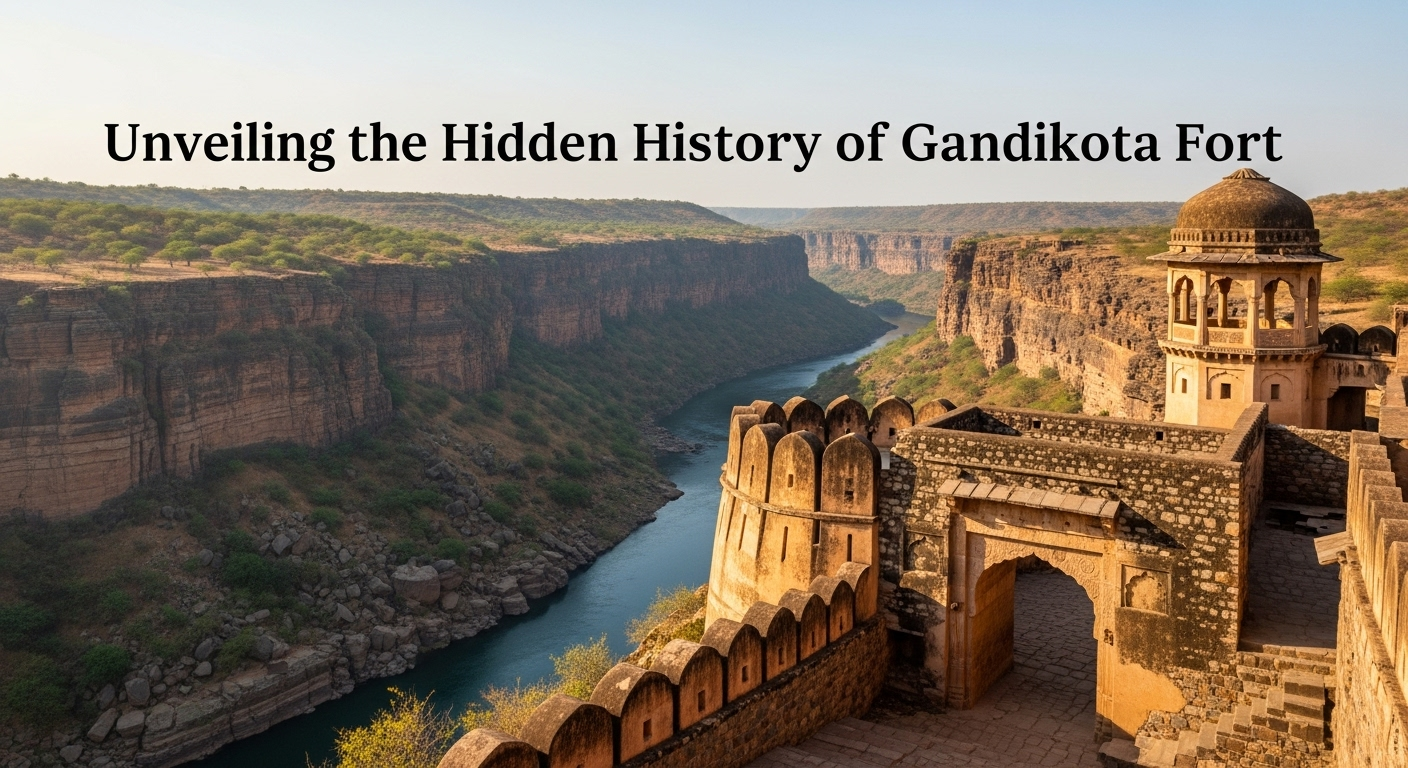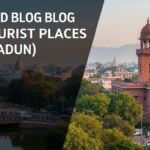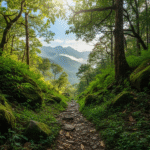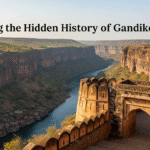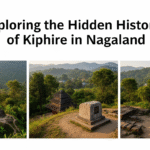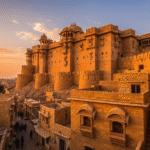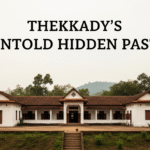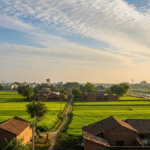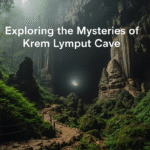In the Kadapa district of Andhra Pradesh, Gandikota Fort is more than old walls. It guards old tales. Though not as known as the American Grand Canyon, it is very impressive. This place, 300 kilometers from Hyderabad, is India’s answer to the Grand Canyon.
The Gandikota mystery mixes India’s history with silent stories of its forts. These stories are carved in stone.
The best time to see Gandikota’s history is from October to March. The cool days invite travelers and historians. Gandikota is not just for viewing. It has trails for treks and spots perfect for taking pictures. This fort has watched time pass by silently.
The beauty of Gandikota is revealed within its fortress walls. Next to a calm canyon, it shares tales of old achievements.
Key Takeaways
- Gandikota Fort, adjacent to the canyon, provides a unique insight into the area’s past.
- The canyon’s similarity to the American Grand Canyon has earned it the title “Grand Canyon of India.”
- Photography, hiking, and boating are among the popular activities available for visitors.
- Local cuisine is an integral part of the Gandikota experience, with traditional Andhra dishes on offer.
- Accessibility to Gandikota is convenient with road connections from major cities like Hyderabad and Bengaluru, as well as the nearest airport in Tirupati.
- Best time for outdoor activities in Gandikota Canyon is during the cooler months from October to March.
Discovering Gandikota: The Grand Canyon of India
Gandikota Canyon, known as the Arizona of India, draws visitors with beautiful landscapes. It has deep gorges shaped by the Penchikaleru River, much like the American Grand Canyon. These show the area’s rich geological features, making it popular among explorers.
The area’s calmness offers a serene and deep peace. Located about 300 kilometers from Hyderabad and 150 kilometers from Bengaluru, it’s perfect for weekend trips. The best time to visit is from October to March. This is when the weather is nice for hiking and taking photos of the landscape.
- October to March: Ideal for visiting due to comfortable temperatures and clear skies, enhancing outdoor activity experiences.
- Summer: Extreme temperatures can present challenges for visitors.
- Monsoon season: Offers lush, vivid landscapes, though travel might be obstructed by seasonal flooding.
Gandikota also offers a break from city life, inviting those seeking quiet nature spots. People from all over the world come to see its beauty. This has made it a well-known spot in India’s list of scenic places.
The Architectural Marvel of Gandikota Fort
Gandikota Fort’s grandeur shines beyond its history. It’s a treasure of architecture and art. Its carvings and fortifications show the ancient secrets of Gandikota. Each structure has its own story, inviting visitors to explore the architectural beauty that’s lasted through time.
Significance of Gandikota’s Architecture
The fort’s architecture is not just beautiful. It was designed to be a home and a fortress. The strong walls protected from invasions. They show a mix of architectural styles from different rulers. This shows the historical and cultural changes of the area.
Intricate Carvings and Fortifications
Gandikota’s heritage is seen in its temples and palaces. Each carving is a unique piece of art. They show the amazing skills and the ancient secrets of Gandikota. These elements help us understand the past lifestyles and religious influences.
| Feature | Description | Significance |
|---|---|---|
| Fort walls | Massive and made of red sandstone | Provide defense and gives the fort its distinctive color |
| Temples inside the fort | Richly decorated with carvings and sculptures | Showcase religious and cultural influences |
| Main gate | Called ‘Mahadwaram’ with intricate carvings | Represents the grand entry, symbolizing power and might |
The skill shown at Gandikota Fort shows the era’s technology. It reflects the Gandikota historical exploration by historians. It invites visitors to learn about its history, hidden within its walls.
Hidden History of Gandikota
Gandikota is full of mysteries and wonders. It’s not just pretty sights here. This place and the big canyon next to it have seen a lot of history. They’ve watched many stories unfold from the dynasties on the Deccan Plateau. Knowing Gandikota’s history is like looking at a beautiful, old tapestry. It’s made of power, architecture, and culture from long ago.
Gandikota was important for many reasons. It was a strong fort by the Pennar River. This spot was key for old trade routes and battles. But Gandikota was more than a fort. It was a bustling place. Its markets were alive with traders from far places. They traded silks, spices, and jewels. This mix of cultures and businesses was a big moment in South Indian history. It made Gandikota very special.
- Emphasis on the strategic location benefiting trade and military defense.
- Cultural exchanges that influenced local architecture and traditions.
- The enduring legacy visible in the fort’s surviving structures and artifacts, telling tales of a bygone era.
Gandikota is great for exploring history. Every visit could lead to new discoveries. It’s not just the beautiful views that attract tourists and historians. It’s the chance to find lost stories in its walls and passageways.
More and more people want to visit this place. They’re not just after the views. They’re curious about Gandikota’s deep history. It makes them want to dig deeper and learn more about this place.
“To walk through Gandikota is to traverse the corridors of time.”
The old ruins of the fort tell us about its great and troubled past. Studies and explorations are still going on. They hope to reveal more secrets of Gandikota.
Legends and Lore Surrounding Gandikota’s Past
Gandikota’s story is full of ancient secrets and vibrant folklore. These tales add depth, making it a place rich in mysteries and legends.
Mythological Roots and Folktales
Gandikota’s charm comes from its many legends. These stories blend history and mythology. They tell of bravery and give insight into the region’s culture and spirituality.
Local Stories and Their Historical Impact
Local tales shape Gandikota’s culture and traditions. They explain ancient secrets and bring people together. They link past and present, keeping ancestral traditions alive.
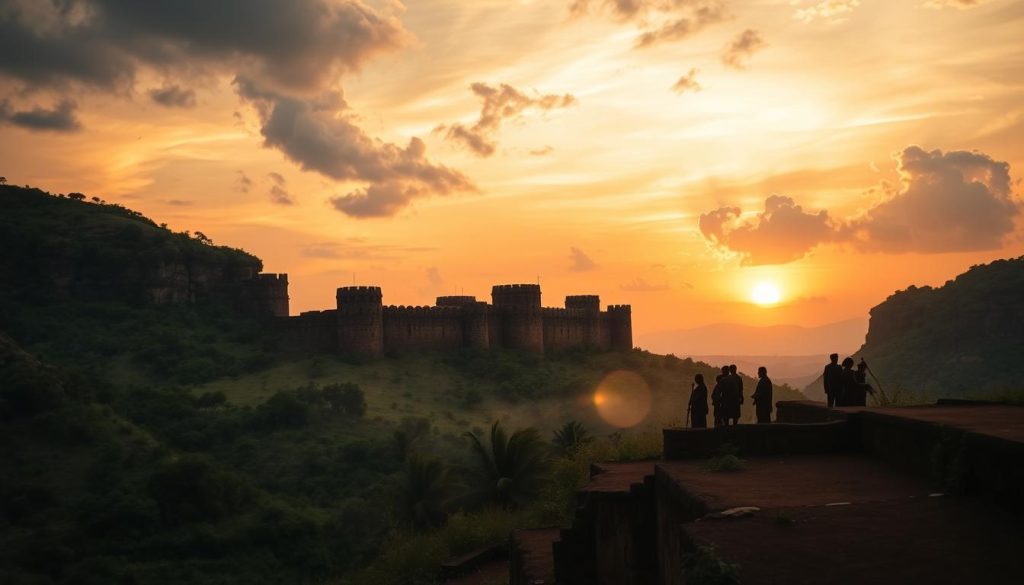
| Location | Event | Activity | Timing |
|---|---|---|---|
| Gandikota Fort | Daily Visits | Exploration, Photography | 8 AM to 6 PM |
| Khajjiar, Himachal Pradesh | Khajji Nag Devta Fair | Festival, Horse Riding | July Annually |
| Nubra Valley, Ladakh | Local Cuisine Tasting | Culinary Experience | All Year Round |
| Ziro, Arunachal Pradesh | Ziro Music Festival | Music, Cultural Exhibits | Annual Event |
Finally, Gandikota’s legends enrich its history. This makes each visit a journey into its everlasting story.
Gandikota’s Strategic Importance Throughout the Ages
Gandikota is a special place in India’s history. It has been important for a long time because of its location. Many rulers have controlled it to show power. It was good for watching and defending the area.
The place is also famous because of the Pennar River. The river and land around it made it a strong place. Rulers over many years liked this natural defense.
- Known as the ‘Grand Canyon of India’, its majestic cliffs and deep valleys offered unmatched natural protection.
- The encircling Pennar River further complicated access for potential invaders, making Gandikota a formidable challenge to conquer.
- Regular cultural and adventure activities like rock climbing, rappelling, and birdwatching not only highlight the area’s historical layers but also add to its current appeal.
In the 13th century, the Kamma Kings built Gandikota’s fort. Having Gandikota meant you could control trade and military moves in the area.
Gandikota is more than an old fort. It has a rich culture and beautiful nature, too. This makes it a place that tells stories of India’s past and present.
Gandikota shows us history, culture, and nature all in one place. It teaches us lessons from the past. These lessons are important today and will be in the future too.
Gandikota Historical Exploration: Fort Ruins and Relics
Gandikota has a fascinating history shown by its ruins. These ruins sit by the Pennar River. They share stories of past glory, smart design, and tough times. Efforts are now being made to save them.
Uncovering Artifacts and Remnants
People have worked hard to learn about Gandikota’s past. They found things like pottery, weapons, and personal items. These finds tell us about the rich culture that once existed here.
The Decline and Preservation of Gandikota’s Structures
The grand buildings of Gandikota have aged over time. But there is good news. People are working to keep these old ruins beautiful and safe. This helps us keep this important piece of India’s history.
Also, by using modern methods, we’re making sure people can visit without harming the site. This mix of old and new keeps Gandikota’s story alive and exciting.
| Location | Importance | Conservation Efforts |
|---|---|---|
| Gandikota Fort | Historical fortress holding centuries of history | Ongoing structural stabilizations, public awareness campaigns |
| Ancient Temples | Religious and cultural significance | Archaeological studies, restorative projects |
| Royal Quarters | Insights into the lifestyle of rulers | Preservation of artefacts, guided tours |
Exploring Gandikota helps us learn and appreciate our history. As we uncover more, we make sure to protect these ruins. This ensures Gandikota’s history remains a key part of India’s heritage.
Gandikota during the Rule of Dynasties
Gandikota’s history is rich because of many rulers. Over time, different leaders made it a special place in India. Their building skills are still seen in the fort today. From the Reddy Kings to the Qutb Shahi dynasty, all added something unique.
The rulers of Gandikota focused on its growth and culture. Royal palaces and worship places tell old stories. These stories are about politics, culture growth, and wealth.
Throughout its golden ages, Gandikota was more than just a fort city; it was a hub of aristocracy, religion, and culture, echoing the historical splendor of its dynastic past.
The fort shows us past military strategies. It also shows the art styles of its different rulers. Every ruler brought something new to Gandikota, adding to its story.
| Dynasty | Influence on Architecture | Impact on Culture |
|---|---|---|
| Reddy Kings | Initiation of robust fortifications | Enhancement of trade and cultural exchanges |
| Qutb Shahi | Architectural innovations with Islamic influences | Introduction of Persian art and literature |
This heritage lives on in Gandikota’s stones and air. It calls to those who love history, travelers, and anyone interested in culture. It invites everyone to see its long-lasting legacy.
Life Inside Gandikota Fort: Ancient Socio-Cultural Insights
The ancient Gandikota Fort is known as the “Grand Canyon of India.” It shows how people lived in Gandikota centuries ago. It was a key military area and a place full of culture.
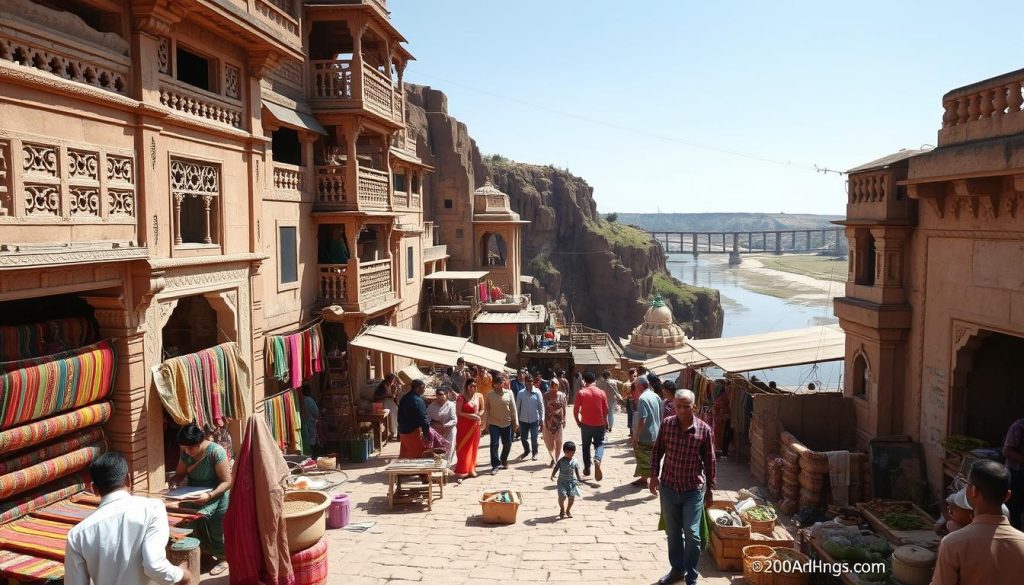
People in Gandikota fort enjoyed a life rich with their culture. Their lifestyle mixed well with the fort’s environment. Temples, markets, and homes show how they balanced spiritual, economic, and social life.
Daily Life and Traditions of Inhabitants
Gandikota had people from different backgrounds living together. Weavers made beautiful patterns. Blacksmiths and other craftspeople showed off their skills. Markets were not just for trading but also places where people shared news and stories.
Cultural Crosscurrents and Influences
Gandikota’s location made it a melting pot of cultures. Artisans and traders brought new arts that mixed with local traditions. The fort shows Islamic and Hindu influences, showing a mix of ideas and beauty.
Gandikota’s stories teach us about the people who lived there. They tell us about their strength, creativity, and how they mixed different cultures. Their lives in Gandikota Fort are a lesson in resilience and art.
Gandikota’s Mystical Canyon: A Geological Wonder
The Geological wonder of Gandikota is in the Kadapa district of Andhra Pradesh. It has stunning views of its canyon. This place, like the Grand Canyon in the U.S., wins people’s hearts with its big rock shapes and changing lands.
The Gandikota canyon geology was shaped over time by the Pennar River. This river made Gandikota’s lands and helped the famous Gandikota Fort stand tall. The sights here remind us how strong and lasting nature is.
Getting to this spot is easy for people from Hyderabad and Bengaluru. Cabs and buses go there a lot. The cooler months from October to March are the best times to visit. This is to avoid the very hot weather that goes over 40°C in summer.
Those who love adventures and taking pictures will love Gandikota. There are many paths to hike on. Early mornings or late afternoons are the best for photos. The light makes the canyon look amazing then. If you’re staying longer, check out the Belum Caves too.
- Location: Kadapa district of Andhra Pradesh
- Best Visit Time: October to March
- Nearby Attractions: Gandikota Fort, Belum Caves
- Activities: Hiking, Camping, Photography
Gandikota’s canyon adds to the area’s history. It also shows how Gandikota’s history and amazing geology connect. The Geological wonder of Gandikota inspires all who come to explore.
Conclusion
In India’s history, Gandikota’s historical heritage shines bright. It combines natural beauty and amazing buildings. Gandikota has stories of beauty and big old buildings. It tells us about the people who lived there long ago. When you visit, you find more about Gandikota’s hidden history. It makes you want to learn more about the past.
Gandikota has big walls and a mysterious canyon. They tell old stories of bravery, culture, and how people lived. Looking into Gandikota’s past is like discovering Gandikota all over again. Each stone tells a story of long ago. This mix of quietness and big stories makes Gandikota special. It is a treasure for anyone who loves India’s history.
If Gandikota’s stories inspire you, explore more places in India. You can find amazing places like the Ajanta and Ellora caves. These caves have history carved into the walls. To see these wonderful places and learn their stories, check out these heritage-rich sites. Gandikota is only one part of India’s big history story. It welcomes everyone with its mysteries.
FAQ
What is the hidden history of Gandikota?
Gandikota’s ancient fort dates back to the 12th century. Many dynasties have ruled it. It’s full of historical ruins that show its importance over centuries.
Why is Gandikota called the Grand Canyon of India?
Gandikota has vast and rugged terrain, looking much like Arizona’s Grand Canyon. The Penchikaleru River has made a deep gorge. This creates views similar to those of the famous landmark in America.
What is the significance of Gandikota’s architecture?
The architecture of Gandikota shows the skill of ancient builders. It has grand forts, detailed carvings, and many temple styles. These reflect the styles of the dynasties that once ruled Gandikota.
Are there any legends or folklore associated with Gandikota?
Yes, Gandikota is full of legends and tales. The local stories often talk about mythical figures and events. These stories add a mystical feel to Gandikota. They give us a peek into the old traditions and beliefs of the area.
How has Gandikota’s strategic location been important over time?
Gandikota is on the edge of a gorge, which was great for defense. This made it valuable for many rulers. Its spot helped control trade routes and keep an eye on the land. This was key for politics in the region.
What can one learn from exploring Gandikota’s fort ruins and relics?
Exploring Gandikota’s ruins teaches us about its past. We learn about daily life, religious practices, and ancient architecture. The artifacts show how people once lived in the fort.
What efforts are being made to preserve Gandikota’s structures?
There are efforts to keep Gandikota’s history safe. This includes fixing the ruins, restoring fort walls, and protecting the temples and carvings. These actions help save Gandikota’s heritage for future people.
How did Gandikota’s rule under different dynasties influence the area?
Rulers like the Reddy Kings and the Qutb Shahi dynasty shaped Gandikota. They brought their own culture and building styles. They built palaces, temples, and spaces for the public. This changed the social and economic life in the area.
What insights into ancient socio-cultural life does Gandikota Fort offer?
Gandikota Fort shows us about the old ways of living. Its buildings tell us about daily activities, religious practices, and cultural mixing. It shows the lively world of a fort city and its changing influences.
What geological features make Gandikota’s canyon a wonder?
Gandikota’s canyon has huge rocks, deep valleys, and a dramatic shaped landscape. The Penchikaleru River shaped it. Its colors and shapes show why it’s a natural wonder and important geologically.
